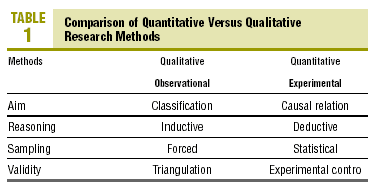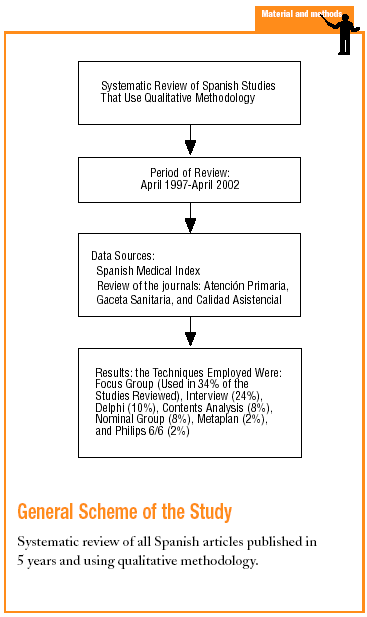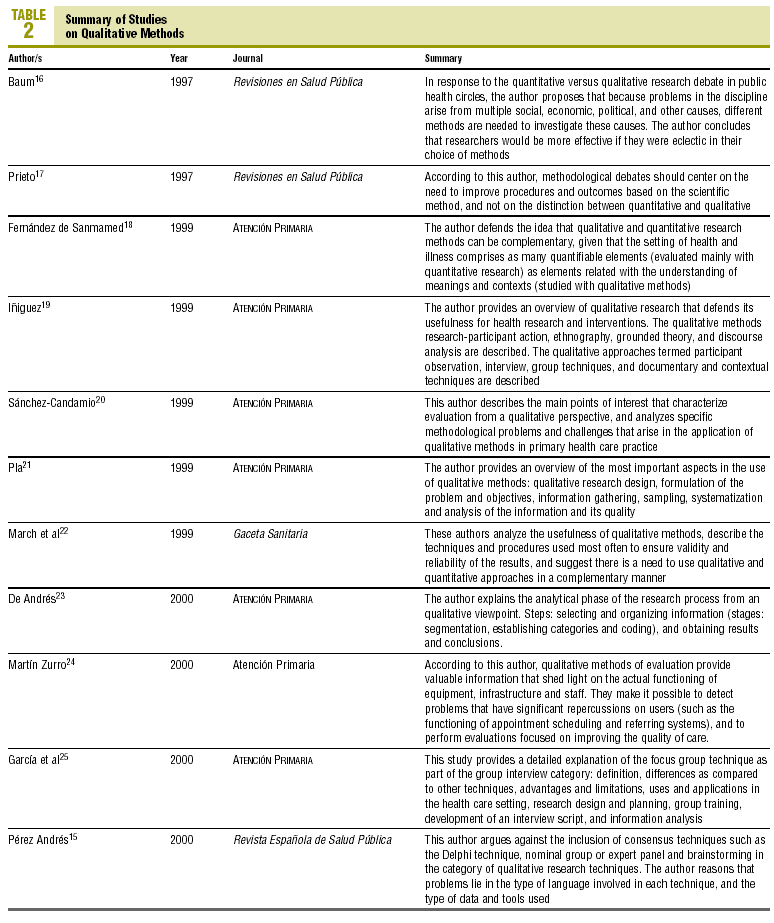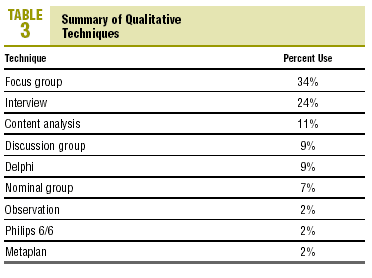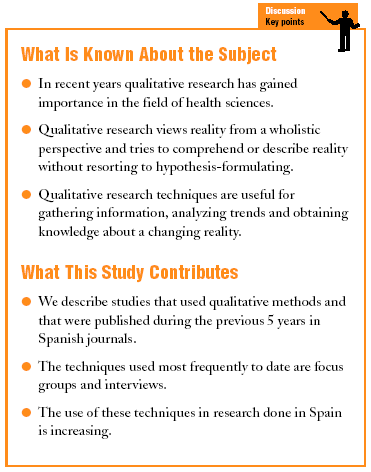Introduction
In recent years qualitative research (QR) in health sciences has attracted the attention of both those who perform research concerning health care systems and those who work in clinical settings. Topics that are especially suitable for qualitative methods include quality analysis as well as aspects that are hard to study with quantitative approaches, such as determining the social impact of political decisions, identifying changes needed in professional roles, consensus-building for reaching decisions on policies to be put into practice, analyzing the patient-physician relationship, or identifying issues that matter most to different interest groups. Quantitative research, on the other hand, is more concerned with determining causal relationships, and with measuring or predicting phenomena as accurately as possible.
Qualitative research approaches reality from a wholistic perspective that tries to comprehend or describe it without resorting to hypothesis-formulating or hypothesis-testing, establishing objective measures, controlling carefully for all variables or randomly selecting participants. It should be noted that the QR focus cannot be considered useful for answering the same questions that quantitative research is intended to answer. The aims of qualitatives studies such as those summarized in Table 1 are completely different from those of quantitative studies, although in many cases the two approaches complement each other.
Thus QR techniques are applied in a number of settings where they are particularly useful, and where they are the most appropriate way to gather information, analyze trends and examine our knowledge of a changing reality.1 Examples of tasks for which QR methods are potentially well suited are analyzing the opinions or experiences of patients in a given segment of the health care system,2,3 identifying health care priorities,4 and gathering ideas about ways to improve the quality of care.5,6
Like all research techniques, QR methods are based on assumptions and must be applied with rigor to ensure that the results are valid. In particular, two essential features of these techniques deserve emphasis. First, experts are chosen to reflect the different sensibilities, perspectives and points of view of different reference groups. Second, triangulation, i.e., consulting similar peer groups independently in order to obtain contrasting viewpoints, is used whenever possible to ensure the validity of the results.7,8
The main differences between QR and quantitative research can be summarized as follows:9-13
Qualitative research attempts to describe reality by assuming a degree of subjectivity and trying not to fragment reality so as not to dilute its complexity and dynamism. Quantitative research is more reductionist in nature and seeks to describe reality in the most objective terms possible, when necessary breaking reality down in order to analyze a part of it in detail.
Qualitative research arises sometimes from theories, models or assumptions, and other times from observations or questions that researchers formulate about issues, whereas quantitative research divides reality into parcels to test a hypothesis. Qualitative research accepts the possibility that the conclusions may at times be biased. Quantitative research draws on designs that seek by all means possible to avoid any bias or other source of error.
Subjects invited to participate in QR are chosen in a nonrandom manner in most cases because of their knowledge, experience, professional or personal characteristics. In other words, the subjects who are chosen are assumed a priori to have "something to say." Quantitative research, although it also involves different interest groups or reference groups connected with any given issue, uses selection criteria based mainly on chance to ensure that participants are independent.
The internal and external validity of QR is based mainly on the appropriate selection of subjects based on their professional or social representativeness, and on comparison of the results obtained with different methods or with different groups (triangulation). The internal validity of quantitative research is dependent mainly on the rigorous control of biases and sources of error, and its external validity depends on the degree of similarity between the subjects and the target population.
Qualitative research is being used increasingly as a source of information14 or background knowledge for research projects, and is thus used in association with quantitative research techniques.
When QR techniques are described, a distinction is often made between eminently descriptive techniques used for information analysis, and the so-called consensus techniques.15
Information analysis techniques are mainly descriptive and aim to comprehend or understand reality from different perspectives. Consensus techniques aim to reach agreement on subjects of interest for which conclusive information is unavailable, or when information is hard to obtain and decisions need to be taken or probable courses of action need to be decided. In practice, it is not unusual to find both types of techniques being used together in the same research project.
The aim of this study was to describe the use of qualitative methods in articles published in Spanish health science journals. We quantified the use of qualitative techniques and determined which were used most often.
Material and Methods
We reviewed research articles based on qualitative research methods and published during the period from April 1997 to April 2002. Items published in Spanish journals were located by searching the Índice Médico Español (IME) bibliographic database with the search terms métodos cualitativos and investigación cualitativa.
In addition we perfomed a systematic search for relevant items published in the journals Atención Primaria, Gaceta Sanitaria and Revista de Calidad Asistencial, as studies based on qualitative methods usually appear in these serial publications.
The inclusion criteria were therefore intended to locate articles published in health science journals indexed in the IME (with special emphasis on the serial publications listed above) that had been performed entirely with qualitative research methods of any type. We also included articles that reviewed qualitative research techniques and described the advantages and drawbacks of this type of method in comparison to quantitative methods.
The main exclusion criterion was the use of predominantly quantitative research methods even if a qualitative technique had been used for part of the study.
The literature review was carried out during the period from September 2002 to February 2003.
Results
In Spain the number of studies done with QR methods has increased steadily as these methods have gained in importance (Table 2).16-26 Qualitative methods have been, in the opinion of many authors, underused because the advantages of applying these techniques are not well understood.
The Spanish journal that published the largest number of qualitative studies is Atención Primaria (49% of all articles reviewed). Of the health science journals we analyzed, those that have published the fewest such studies were Medicina Clínica, Revista de Medicina Familiar y Comunitaria, and Archivos Españoles de Urología (2% of all published articles, in each case).
In accordance with trends throughout Europe, the largest numbers of qualitative studies (34%) were published in 2000, and the number of such studies was lowest (7%) in 1997. The most widely used techniques were focus groups (34%) and interviews (24%). Observation, Philips 6/6 and metaplan were used least often, each accounting for 2% of all qualitative studies. (Annex 1, a summary of the studies we analyzed, is available on line.)
The most frequent aims of the qualitative studies we analyzed were information gathering (18%), recording the opinions, and experiences of patients who used health care services (15%), recording the opinions and experiences of health care professionals (21%), identifying elements that needed improvement in instruments currently in use (e.g., protocols and medical records), recording ideas for new elements (12%), recording ideas for improving the quality of care (21%), and evaluating training programs, procedures or working methods (12%).
Authors who published the largest numbers of qualitative studies during the period we analyzed were March (17% of all studies) and Prieto (14%) from the Escuela Andaluza de Salud Pública.
Discussion
The contribution of qualitative research to health sciences has been increasing in terms of the numbers of articles published and the interest shown in the subjects these studies have investigated. In Spain and elsewhere, QR techniques have undergone a process of rediscovery,27,28 which has led many health care professionals to express interest in learning about these techniques, their characteristics, and naturally how and when to use them.
On 1995 the British Medical Journal (BMJ)29-33 published a series of articles which described the logical basis, focus and usefulness of qualitative techniques, and presented the most frequently used techniques. Five years later, in 2000, the BMJ published another set of articles about these techniques.34-36
As found in the present review, this tendency has also appeared in Spain, with the result that the largest number of qualitative studies was published in 2000. Some journals such as Atención Primaria devote space specifically to this type of study. Further evidence that QR does not seem to be a passing fad is the publication in 200237 of a theme issue of Revista Española de Salud Pública that contained studies describing the importance of qualitative techniques, and original articles based mainly on qualitative methods.
We found that qualitative techniques provided added value to research, and that the number of qualitative studies has been increasing. The popularity of these techniques has increased as a result of interest in evaluating and improving the quality of care, the need to obtain more information on patients' opinions and points of view, and undoubtedly new strategies for making health management more participatory.
As in any type of study, qualitative research requires compliance with basic requirements to ensure the validity of its results. When used with rigor, qualitative methods can be especially useful in health care settings.







